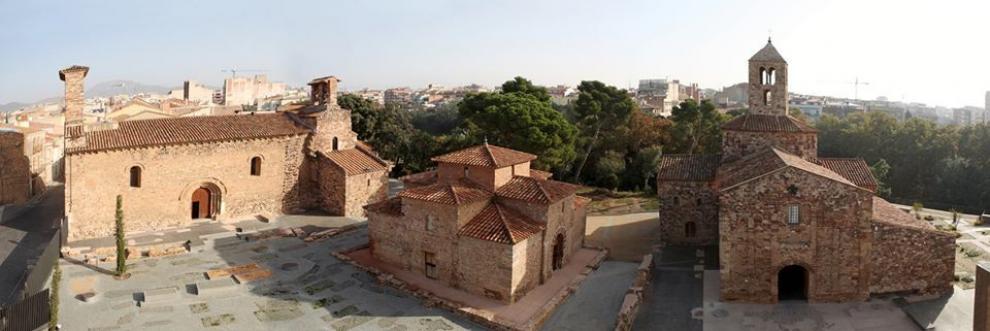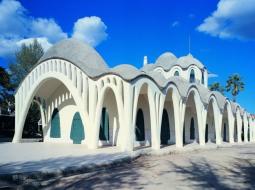Thessaloniki gets ready for its metro launch in November
The underground rapid transit lines have been under construction for almost two decades due to various project delays
 TheMayor.EU logo
TheMayor.EU logo 
The primitive medieval centre of the town of Terrassa is related to the year 844 of the "Terracium Castellum", located near the stream of the Palau. At the beginning of the 12th and 13th centuries, with the strengthening of the feudal structure and the opening of the market by the fiscal policy of the Catalan monarchy, the town of Terrassa was born.
On the left bank of the Vallparadís stream, the count of Barcelona, Ramon Berenguer III, sold land in 1110 to the noble Berenguer Sanlà, so that he could build a fortress later. This would become the Carthusian monastery of Sant Jaume de Vallparadís. It is currently the main headquarters of the Museum of Terrassa.
In the mid-nineteenth century, a period of industrial expansion began. Communications improved considerably, with the construction of the Barcelona road in 1845 and the arrival of the train from the Catalan capital, in 1856.
The industry was transformed with the use of the steam engine. An important era began for the city of Terrassa. The growth of the population forced the demolition of the city walls in 1876. In 1877 the Terrassa Savings Bank was founded, and King Alfonso XII granted Terrassa the title of city in the same year.
The demographic growth would continue until the Civil War. After the war and favoured by the social and economic structure of the Franco regime, the Terrassa industry began a strong development that brought about a very important population increase and immigration.
The city grew in a chaotic and messy manner and suburban areas appeared. On September 25, 1962, Terrassa was affected by a huge flood that overflowed the streams and led to a major urban catastrophe and loss of human life.
Major industrialization was experienced in the 1960's. The textile industry lost weight and the metallurgical sector evolved. The economic crisis of 1974 paralyzed this industrial process.
On June 15, 1977, two years after the death of dictator Francisco Franco, the first democratic elections were held. This started a new phase of prosperity and orderly growth of the city.
Source : Terrassa.cat
Located at the foot of the Natural Park of Sant Llorenç del Munt, Terrassa, with a population of 218,834 inhabitants (Municipal Register, January 2018) and an area of 70.10 km2 is the co-capital of the Vallès Occidental and one of the most important medium-sized cities in Catalonia.
Terrassa has a deeply rooted textile industry tradition.

Terrassa is a university and industrial city, with a rich cultural and artistic heritage. Its strong personality is influenced by its industrial past. Monuments, history and heritage make Terrassa an attractive point of interest for culture vultures.
Terrassa is a vibrant city, with a very dynamic cultural, sports and leisure offer, with large green areas and good citizen relations. The Jazz Festival, the Art Nouveau Fair, hockey, dance, music and theatre seasons and golf exhibitions are a testimony to this.
Finally, Terrassa has been distinguished with the mark "City with a character" granted by the Catalan Tourism Agency.
Raval de Montserrat 14, 08221 Terrasa